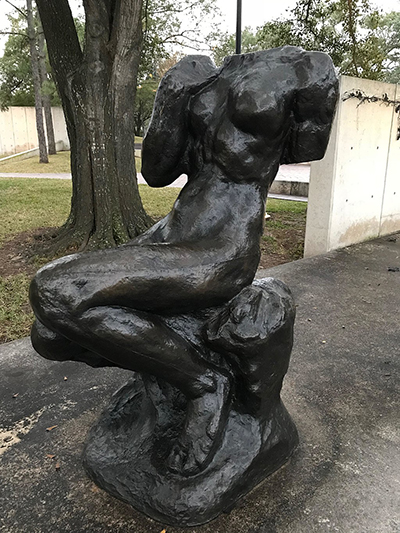Cybele is a sculpture from Auguste Rodin that was initially created in around 1889-90 before being further extended in 1904. It would become one of his larger creations and many copies of it were made at a later date.
It was rare at this point in his career to release partial figures as completed `sculptures, as normally he would just regard them as study pieces that would remain hidden in his studio. He had clearly now realised that these fragments, as some labelled them, could be accepted as artworks in their own right. Cybele features a headless woman and the model for this piece was believed to be Anna Abruzzesi, a toned young woman who featured several times in Rodin's career and is widely considered to have been amongst his favourites of all those who posed for him. He would use a combination of professional models and then sometimes he would ask members of the public to sit for him, when he spotted something about them that he thought would suit his sculpture style. Rodin also used the lady's sister on occasion as well. Some have argued that this sculpture was intended as a preparation piece for his famous project, The Gates of Hell, but this has never been confirmed conclusively.
The piece was originally known as Abruzzesi Seated before the title was changed at a later date, just as happened with many of his artworks. Rodin was unusual in that he liked to name items after they had been completed, almost applying a title to whatever he created rather than attempting to stick to a theme throughout. In some cases he would even change the name five or six times, with each one pointing to something in the piece that occurred perhaps by chance. His main focus was always on an accuracy of reproduction of the life model, rather than worrying about symbolism or mythology, but he would sometimes retro-fit such themes after the piece was finished, as if that was always his intention.
There have been many bronze casts made over the past century, though only one was produced during Rodin's lifetime, and this one can be found in the collection of the Victoria and Albert Museum in London, UK. Additional versions were produced in the 1980s and these can be found across America, including at the Brooklyn Museum, the Lillie and Hugh Roy Cullen Sculpture Garden in Houston and also the North Carolina Museum of Art. This is a common situation within this artist's career, where new versions of his work have appeared after his lifetime, but their value would clearly be reduced in comparison. Many of his original moulds still exist today and so there is no reason why more casts could again be produced in the future, though efforts are made to ensure a clarity around the origins of each of these pieces in order to protect the long term reputation of the artist.




